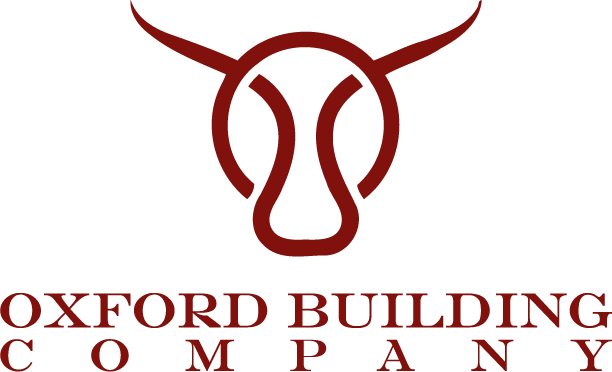
Start Your Construction Project With A Proper Preconstruction Plan. Here’s What You Can Do:
Pre-Construction is the first phase, or the planning period of construction management. It is quite an imperative stage for the success of a construction project. To ensure that the project progresses smoothly, there are several segments that a manager needs to work through during this phase. This involves the tasks of determining the project goals, identifying the potential issues, scheduling various assignments, outlining the scope and costs, and analysis of the requirement of resources.
A plan fabricated through a blend of expertise and experience of the construction project manager — the pre-construction phase gives the team a definite outline of the course of action to comply with, during the execution process. It even educates the owner/client on how much would they need to invest and what all operations would they require to conduct, to frame a functional project.
So, what all steps are covered during the pre-construction phase?
Well, here is a quick lesson on the many pre-construction planning stages.
<br.
First Things First: Set Up A Meeting
It all starts with a meeting. The contractor must meet the owner/ client on a one-to-one basis. They can both outline the goals, an initial budget, and the deadline till when the project can most likely be completed.
This initial meeting is all about learning the client’s vision for the project. The contractor must jot down the essential points he/she gathers at this meeting and start to put together the rest of the aspects of the pre-construction plan. After the initial session, the contractor can schedule several follow-up meetings to stay updated about any further changes suggested by the client.
Determine the Objectives of the Project
As a construction project manager, one needs to outline and create a proper layout of the overall project during the initial stage of pre-construction planning. This step will cover — looking over the blueprints, the architectural plans, and trailing paths towards the attainment of project goals set by the client. The client too should seek answers to the questions they have, for the contractor during this phase. The queries can be in regards to the planning process, arrangement of resources, or the overall design that the client believes may become a problem during the subsequent construction phase.
This evaluation can fabricate groundwork for the rest of the pre-construction planning process.
Experienced and knowledgeable contractors have all the answers to the client’s demands and are able to decide if his/ her vision is feasible for construction in the intended location.
Analysis of the Construction Site
The construction site and the client’s goals should perfectly align with each other. Therefore, a site visit is an absolute must. Evaluate the site’s soil — ensure it can provide a solid foundation, as well as examine the other important factors (such as parking, traffic flow, landscaping, capacity) too.
The contractor must communicate these significant details to the client and as per the subsequent suggestions, solutions shall be found to make the site work, or otherwise, a new site must be found.
What Is The Scope, Schedule, And Budget?
After having defined the practical goals of the project, the contractor must proceed towards the decision of concluding upon the next three significant objectives of the pre-construction process — the scope of the project, ascertainment of budget, and framing a schedule.
(i) A Detailed Project Scope
What work will be performed during the construction phase, well, a description of the same is what the ‘scope’ of a construction project is. The contractor needs to draft the scope — from start to finish, ascertain the type of workforce required for each phase, and determine the equipment and materials necessitated for the completion of the job. All of these constituents fabricate the overall scope of the project, which consequently serve to be a checklist for the entire team to reach the project goal, by ensuing one step at a time.
The scope must be clearly described to the client and stakeholders as well, to avoid any miscommunication in actions taken further.
(ii) Set a Budget
Clients set a certain budget for their projects. And this initial number is typically an undefined figure — an estimate that, quite certainly, is fluid.
Now, based on past experience and an in-depth knowledge of the industrial rate — the contractor has to see if the project is feasible within the specified budget — whether the scope of the project, materials required, hiring of resources can be covered under this bracketed figure or not. He/she can even make proposals to either change the project within those confines or stretch the budget to accommodate the client’s goals.
The contractor can, therefore, create a budget and evaluate saving opportunities by
- Cost Estimation : A realistic budget, which is based on facts, can accurately cover all the expenditures of the project. And this figure must be revised again and again during all the stages of the construction plan. Also, the estimate must be calculated on the grounds of built-in contingencies. This method can satisfy any of those changes that do happen to occur during the execution of the plan.
- Value Optimization : The contractor must not only cut costs but also try to escalate the overall value of the project. Usage of sustainable materials and efficient LEED components can, indeed, help the contractor in the achievement of the same.
(iii) Fabricate a Schedule
Setting a schedule is another requisite step of the pre-construction planning phase. A checklist of the due dates must be prepared for when the different stagings of the project can be evaluated to reach their respective completion points.
A clearly outlined schedule can ensure that all contractors, subcontractors, architects, workers are held accountable for their portion of the job. If the team encounters scenarios that may challenge the different timelines during construction, contingency plans must be in place to handle the same.
Knowing all such minute details can, indeed, make all the difference in managing the entire schedule of the project. A proper regular inspection can help in identifying the time-lag loopholes and help the construction manager to find solutions for the specific problems.
Outline The Visuals: Create An Initial Schematic Design
Around 65% of the world’s population are visual learners. And, therefore, it would be a great idea if an architect could get a schematic design outlined for your entire project. This could help the client to understand the project more comprehensively — its details and its staging aspects. His/ her feedback can help the entire team to deliver promising results.
Procurement Management
You must consider the long turnaround time taken by various industries involved in the construction process, during the pre-construction phase itself. It may take you a lot of time to acquire your materials. However, meticulous planning can build this lead time into a schedule. Hence, senseless delays can be easily avoided because of effective coordination and resource management.
Acquire the Proper Approvals
Every construction job requires proper approvals from respective state authorities. Thus, the contractor and construction project manager must acquire all the material acquisition and building permits during the simultaneous workings of the pre-construction phase itself. The attainment of such permissions can be beneficial for further smooth functioning of the project stages.
Thus, all the aforementioned points must have proven the significance of a preconstruction plan. All owners should follow these steps so as to lay a strong foundation for your construction project.
And if you are looking for a team of skilled construction managers, contractors, architects, and builders — well, you won’t have to look any further. You can without a doubt, rely on Oxford Building Company and our services.

